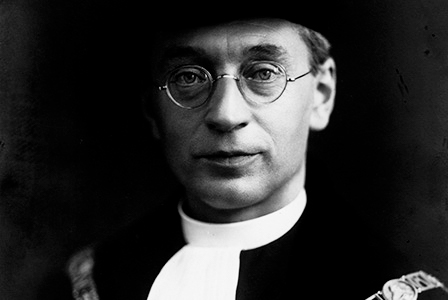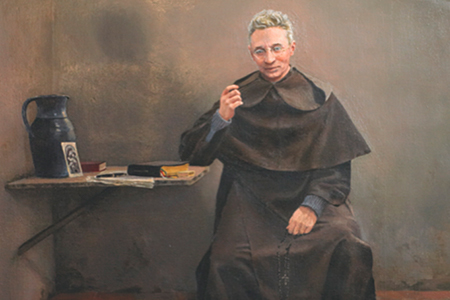Fr Titus Brandsma did his doctorate in philosophy in Rome in 1909. In addition, he used his “Roman years” to study sociology and make contact with the new currents of Christian social thought and with the social doctrine of the Church. Following this, throughout his academic life, many of his studies and courses were centered on topics of spirituality and mysticism.
Since becoming part of the cluster of professors at the recently created Catholic University of Nijmegen in 1923, our Carmelite was a professor of “History of Mysticism” and, in addition, taught various courses on stages or concrete authors of that history.
Areas of Research
There are three specific areas in which Fr Titus developed his research work. The first was the translation and dissemination of the work of Saint Teresa of Jesus. For him, the fact that there was no full translation of the works of the saint that was done according to scientific criteria presented a grave lacuna for the religious culture of the Netherlands.
Together with a group of Carmelite enthusiasts, they were able to translate several volumes, but were unable to finish the project. While in prison in Scheveningen, Fr Titus continued working on a spiritual biography of the Saint, and although he did not complete it, it would have been completed and published in 1946, at the end of the war.
In the second place, Professor Brandsma studied much of the thought and doctrine of the authors typical of the so-called devotio moderna, the rhenish-flemish mysticism, and includes that of the beguines, that is, of the spiritual literature of central and northern Europe (fundamentally the Netherlands) toward the end of the Middle Ages. Among the authors whom our Carmelite studied, we can highlight Jan Van Ruusbroec, Gerard (Geert) Groote, and Hadewijch of Antwerp.
Finally, one should note his interest in the figures of Saint Willibrord and Saint Boniface, the evangelizers of Friesland, his region of origin. He highlighted, in many articles and sermons, their apostolic life and missionary generosity, something that Fr Titus called attention to because he himself wanted to go to the missions in Java in the 1920s, but was not given permission by his superiors.
Via Crucis
From these three influences Father Titus developed a profound piety for the passion of the Lord and for the cross. In addition, throughout his life, he wrote two commentaries on the stations of Via Crucis. The first of them, written in 1921, emerged in very peculiar circumstances. The Belgian expressionist painter Albert Servaes had painted a Via Crucis somewhat unusual to the tastes of that period, which provoked a great deal of debate. Finally, the Holy Office of Rome ordered that it not be displayed in places of worship.
Fr Titus told Servaes to obey the order, but, at the same time, wrote a beautiful commentary on each of the stations that was published in Opgang magazine.
The second commentary was written in more dramatic circumstances (in the Scheveningen prison), and was intended to accompany the images of each of the stations in the St Boniface Chapel (Bonifatiuskapel) in Dokkum, in whose construction Fr Titus had played an important role. In this Via Crucis, there is no reflection on the fourteenth station. Perhaps he had not time to write it; or perhaps he would write with his own testimony, a few months later in hell in Dachau.
There is no doubt that this deep piety encouraged and consoled the prisoner Brandsma in his personal Via Crucis, whose stations were various prisons and concentration camps. Fr Titus felt deeply united to the passion of Christ and felt that the crucified God was very close to his sufferings. This is how it would be presented, as much in the beautiful poem “Before a Picture of Jesus In My Cell”, as in the conference he gave to the other prisoners on Good Friday, 1942, in the camp at Amersfoort.


